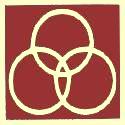
Most experts agree, the succession planning process in a family business is THE most critical strategy for the family business owner to engage.
"Drawing up a succession plan is only one element of the succession management process. The tough part is achieving consensus and support within the family, establishing the timetable for implementation - and sticking to it!" according to leading family business expert
Don Schwerzler.
"Succession planning in a family business is like walking through a minefield. One of the major issues affecting the planning process concerns competing philosophies: Are we a 'family first business' or a 'business first family'."
Schwerzler has been studying and advising family business entrepreneurs for more than 40 years and is the founder of the
Family Business Institute
headquartered in Atlanta GA.
"As succession management experts, we generally consider the "time frame" for successfully transitioning the business from one generation to the next taking 3-5 years. Of course, one visit to an oncologist can drastically alter that best case scenario of 3-5 years" notes Schwerzler.
Succession is best approached as a "process rather than an event" and not overly limited in scope. We have identified several keys elements to success.
Succession As A Planning Process
7 Key Elements
- It must be driven from the top of the business.
- The CEO has the power to fuel commitment and make it work.
- Subordinates aren't objective - they are competing for the power.
- It must focus on the culture and strategy of the business.
-
First step - the family's succession plan
must be done and agreed upon before a plan can be successfully developed and implemented for the family business. The family plan
- should include strategies to put the business interests ahead of the family interests
- should emphasize merit over family position
- Integrating the mission statement of the family with the mission statement of the business becomes the basis for
Family Business Strategic Planning
- The
company mission and strategic plan
will have identified where the business is going and what it needs to get there. The sucession plan should focus on who is needed to lead the business if it is going to accomplish the mission.
- Successful succession plans recognize that successors and future leaders must be developed by the family business - that is, they can be made or grown by the business, using a blend of many approaches:
- experience and training outside of the family business and industry;
- formal education and training courses;
- internal job assignments, job rotation, special projects;
- community and professional organization leadership.
- Succession plans should also recognize shared responsibility where the existing management [family members and non-family members] share in the responsibility for identifying and pursuing their development activities like those mentioned above. It follows that managers must be evaluated on their ability to develop subordinates, not just on their own job skills.
- Succession, as a business strategy, should be built in to the management performance evaluation process and should include assessment by multiple raters. This is known by various names but usually involves a manager being rated not only by his superior but also by colleagues on his same or peer level and by subordinates.
- A succession plan will only be successful if the family and business is committed to making it a part of everyone's job responsibility. It is much easier to believe in and commit to something you DO rather than to a vague concept.
- A succession plan is never complete without identifying and understanding how to manage the "value drivers" for the family business. Value drivers are those elements of the family business that either reduce those risk factors that can hurt and restrict the business (negative drivers) - or those drivers that improve the odds that the family will achieve the full potential of the business for growth and profitability .
SPECIAL NOTE TO PARENTS AND GRANDPARENTS
In our consulting work we have seen a growing concern for many family businesses – dealing with a child/grandchild with a disability such as Autism and how that can impact succession planning for a family business and succession & estate planning for the family. If you have a child with a disability, we recommend you learn more about
SPECIAL NEEDS TRUSTS.
"WITHOUT A GOOD QUESTION A GOOD ANSWER HAS NO PLACE TO GO..."
Chaos Busters - The Management Guide
Identifies 160 Key Business Questions
- 160 Key Business Questions will stimulate creativity and innovation for your entire management team!
160 Key Business Questions are the keys to unlock the hidden potential of your organization!
160 Key Business Questions will save you time and make your work more effective!
160 Key Business Questions is a Multi-purpose tool with unlimited applications!
https://www.family-business-experts.com/chaos-busters.html
|
How Well Organized is YOUR Organization?
Your Business Will Succeed...
If...
You have The Roadmap for Success
That's What
The Practitioner's Guide for Organizing an Organization
Is All About
- PGOO shows how to identify the most pressing problems to solve
- PGOO introduces the ODS-OL (Organizational Diagnostic Survey –Online) - an electronic assessment tool that is highly effective, easy to use, systematic and data-based
- PGOO explains how to produce a better-organized organization
https://www.family-business-experts.com/PGOO.html
|

PAYING IT FORWARD
Family Business Experts
Understands
Family Values and
Business Systems
Succession planning is a process that evolves a successor, rather than an event that produces one.
Return from Succession Planning to
Family Succession Plan
 Most experts agree, the succession planning process in a family business is THE most critical strategy for the family business owner to engage.
Most experts agree, the succession planning process in a family business is THE most critical strategy for the family business owner to engage.



